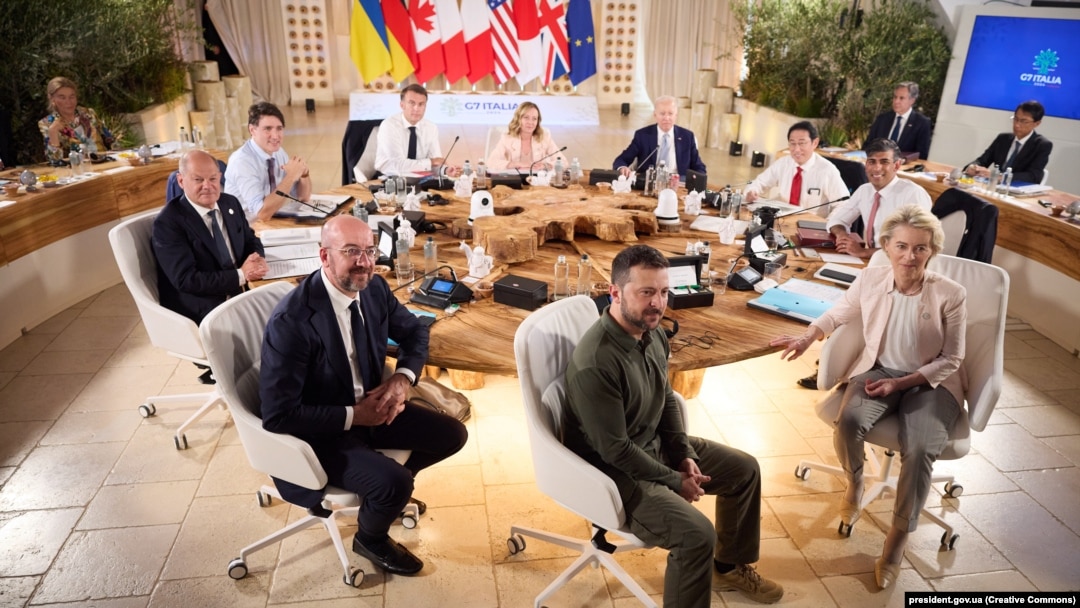The Group of Seven (G7) leading industrialized nations are moving ahead with a $50 billion loan package for Ukraine, and the U.S. contribution of $20 billion will be split between economic and military support, a White House official said on October 23.
Ukraine Invasion: News & Analysis
RFE/RL's Ukraine Live Briefing gives you the latest developments on Russia's invasion, Western military aid, the plight of civilians, and territorial control maps. For all of RFE/RL's coverage of the war, click here.
G7 leaders agreed earlier this year to engineer the loan using profits from the interest on Russian frozen assets.
“To be clear, nothing like this has ever been done before,” said Daleep Singh, White House deputy national-security adviser for international economics. “Never before has a multilateral coalition frozen the assets of an aggressor country and then harnessed the value of those assets to fund the defense of the aggrieved party all while respecting the rule of law and maintaining solidarity.”
"The United States will provide at least $10 billion of our loans via economic support," Singh said, adding that this could involve projects on energy assistance or infrastructure.
The other $10 billion is expected to be in the form of military support, although Singh noted that this will require approval from Congress.
Either way, the United States will provide $20 billion in support to Ukraine through this effort, Singh told reporters.
The remaining $30 billion in loans are set to come from other G7 partners -- Britain, Canada, France, Germany, Italy, and Japan.
The expectation is for the funds to start heading to Ukraine by the end of this year.
The G7 announced in June that most of the loan would be backed by profits being earned on roughly $260 billion in immobilized Russian assets. The vast majority of that money is held in European Union nations.
The decision came after months of debate on the legality of confiscating the money and sending it to Ukraine.
SEE ALSO: EU Summit Eyes Frozen Russian Assets, Migration, And MoldovaRussia has protested the use of its frozen assets, calling it illegal and threatening retaliation.
U.S. Treasury Secretary Janet Yellen announced on October 22 that the United States planned to contribute $20 billion to the G7 loan package but didn’t describe the breakdown on how the funds would be split.
Yellen, who is taking part this week in annual meetings of the International Monetary Fund (IMF) and World Bank in Washington, is set to host a bilateral meeting with Ukrainian Finance Minister Serhiy Marchenko.


